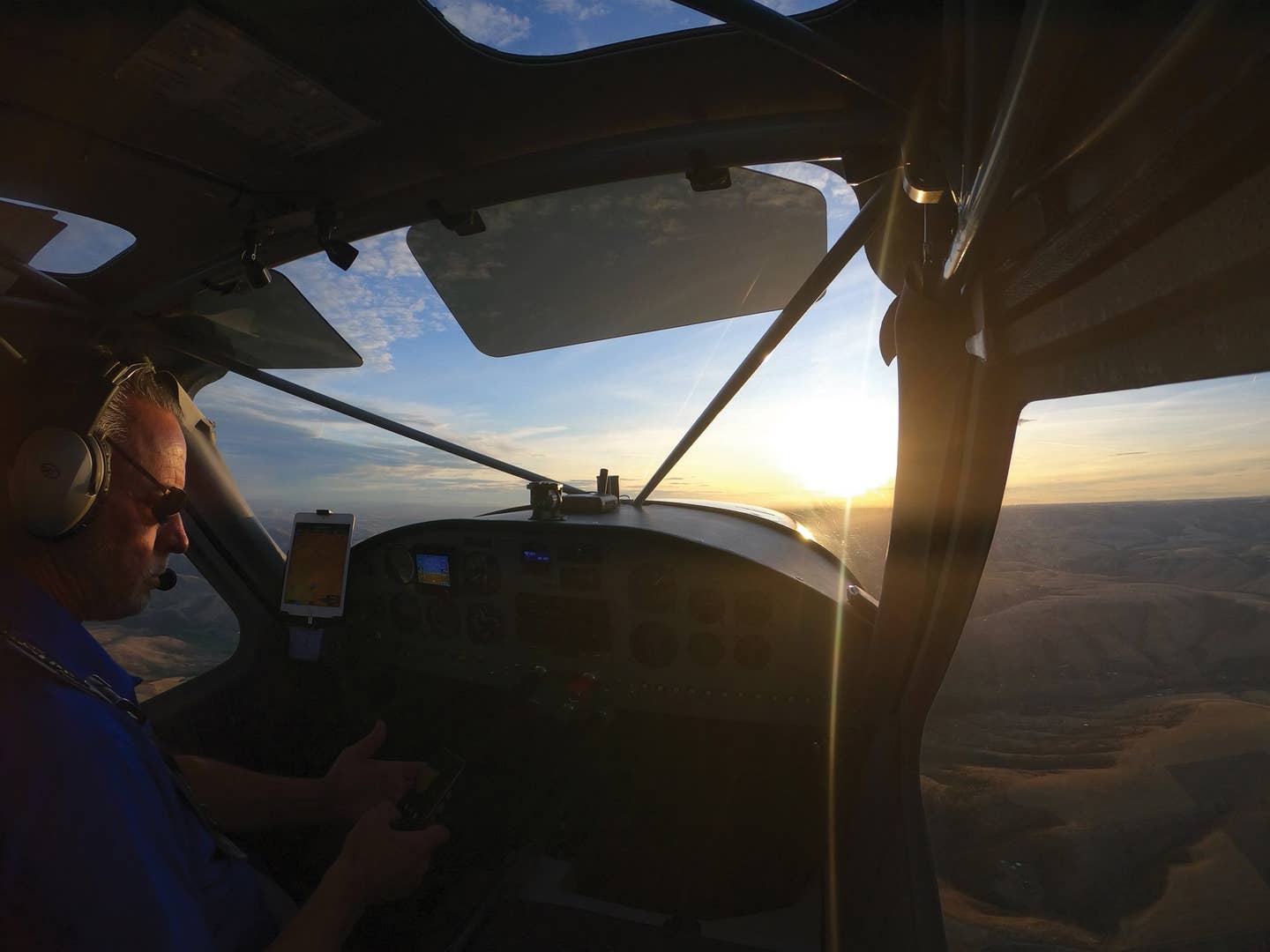The Stall Warning System
An aircraft’s stall warning system doesn’t always receive the attention it deserves
 |
Whether it's a comparatively simple system (a leading-edge vane operates a switch to complete an electrical circuit and sound a horn or illuminate a bulb), or a complex system (which generates signals to activate a stick shaker), a properly operating stall warning system can prevent you from having a really bad day.
Back in the dark ages when I was learning to fly in a Cherokee 140, the routine was for someone to turn on the master switch and watch to see if the stall warning red light illuminated when the person doing the walkaround flicked the vane protruding from the left-wing leading edge. When the bulb did light, it produced a reassuring feeling. No thought was given to the possibility that the test had caused the bulb to reach the end of its life, and it wouldn't work when really needed. It was easier to check the stall warning systems on newer aircraft in the FBO's rental fleet because they used horns, and reasonably good hearing substituted for having a second person looking at the panel bulb. On instructional flights, we'd make careful note of the airspeeds and attitudes at which the stall warning would illuminate or sound.
The lack of effective stall warning systems figured in two recent NTSB accident reports. In one, there was an electrical issue. In the other, investigators looked at repairs, accuracy and the use of headsets.
American AA-1
The flight instructor and student were killed in the crash of a Grumman American AA-1 near Llano, Texas. Visual meteorological conditions prevailed for the Part 91 instructional flight, which operated without a flight plan. The flight originated from the Llano Municipal Airport (AQO).
The airplane was owned by the student pilot. The airport manager told investigators that he saw the student pull the airplane from the hangar and add fuel. The manager said the flight remained in the traffic pattern for touch-and-goes. He said he radioed the instructor that a jet was scheduled to be inbound to the airport. The instructor acknowledged. There was no additional radio traffic involving the accident airplane, and the manager said he thought they had departed the traffic pattern. He wasn't concerned about the whereabouts of the airplane until about three hours later when the instructor's next student showed up.
The airport manager contacted several nearby airports, but couldn't find the airplane. A local pilot then took off to search for the missing airplane. After only a few minutes in the air, the pilot spotted the airplane's wreckage southeast of the runway. It was in a lightly wooded area with cactus plants, approximately one mile southeast of the airport.
A witness later came forward and told investigators he was flying a helicopter on the day of the accident and approached the Llano airport. He noted that there were several airplanes in the traffic pattern, and he saw a flash of a wing and an airplane quickly departed controlled flight toward the ground. He added that he flew near the area, and since he didn't see any wreckage, dismissed the sighting as someone flying a radio-controlled model.
Another witness reported that he and several other people were working near the airport. He said he saw an airplane on the downwind leg of the traffic pattern in a very high angle of attack.
The flight instructor held commercial and instructor certificates for airplane, single-engine and multi-engine land, and instrument airplane. Investigators didn't have his logbook, but found he reported having 8,577 hours as of his last FAA medical exam.
The student pilot didn't hold a student pilot or medical certificate. The student applied for a medical certificate, but it wasn't issued pending additional information. At the time of the application, the student reported a total of 15 flight hours.
The 1969 American AA-1 airplane had two seats and fixed landing gear. Its annual inspection was current. The airplane's stall warning switch, located in the leading edge of the wing, was removed for testing. A meter was used to check for electrical continuity. When the switch was activated, no flow of electricity was observed. The screws used to connect the wiring to the switch were removed. A small amount of corrosion was observed under the terminal ends of the wires and switch contact points. The wiring and screws were reassembled, the test was repeated. This time, when the switch was activated, electrical continuity was confirmed on the meter. A mechanic's work order dated shortly before the accident contained the notation: "adjusted stall warning." Investigators said that, according to a family member of the student pilot, the student had told them a couple days before the accident that "the stall warning still was not working right." He reportedly told family members that the flight instructor would disable the stall warning system for each flight.
The NTSB determined that the probable cause of this accident was the flight instructor's delayed remedial action and inadequate supervision during practice traffic pattern work. Contributing to the accident was the flight instructor's use of a sedating medication on the day of the accident and the airplane's high angle of attack at a low altitude during the traffic pattern work, which prevented recovery during an aerodynamic stall.
Mooney M-20F
The pilot and all three passengers were killed when a Mooney M-20F crashed into a parking lot and struck a building shortly after takeoff from Watsonville Municipal Airport (WVI), Watsonville, Calif. Visual meteorological conditions prevailed for the personal flight. During a weather briefing with Lockheed Martin Flight Services, the pilot said the destination would be Pine Mountain Lake Airport (E45), Groveland, Calif.
A fog bank/stratus layer had moved inland toward the airport from the Pacific Ocean. This type of weather, often called a "marine layer," was typical for that time of year, and was located just southwest of the airport. Two witnesses, one of who was a pilot, reported that the climb angle after takeoff appeared "steep." Both saw the airplane begin a very rapid left roll when it was approximately 500 feet above the departure end of runway 20. The airplane appeared to roll until it was "nearly inverted," and the nose "dropped," so that it was pointing toward the ground. Fire and smoke were then seen shortly after it disappeared behind trees.
The pilot was a co-owner of the airplane. His flight logbook couldn't be located, but his partner in the airplane provided copies that indicated the pilot had about 151 hours of flight experience, with all but 15 of those hours in the accident airplane.
The airplane's annual inspection was current. The stall warning system consisted of a wing-mounted sensor vane and switch assembly wired to an electric horn in the cockpit. The volume output of the horn was dependent on the voltage supplied. Full normal volume was expected at 12 volts. A drop in the voltage, for example due to circuit resistance, would cause the audio output of the horn to drop.
Maintenance records revealed that a new stall warning horn switch was installed about eight years before the accident when the airplane had a total time in service of about 3,442 hours. About four years before the accident, there was an effort to troubleshoot and repair an inoperative stall warning horn. About three years before the accident, at about 3,878 hours, a technician replaced a broken wire to the stall warning system.
The airplane co-owner told investigators that he had never determined the accuracy of the stall warning system, that the horn volume was low, and that the horn was inaudible to a pilot wearing a noise-canceling headset. Two headsets were found in the wreckage. The co-owner told investigators that he and the pilot "...both considered the stall warning system to be totally inadequate and ineffective---totally useless. The stall warning horn could never be heard in flight over engine noise and the muffling effect of headphones."
The co-owner said he never heard the stall warning in flight, and the accident pilot told him "...that he could barely hear the horn if he removed his headset." The co-owner stated that at the pilot's "insistence," the day before the accident, he took the airplane to a service center to address the system performance, and that the "center's conclusion was that the audio level could not be increased with current FAA approved parts." The co-owner told investigators that he had never stalled the airplane or verified the accuracy of the stall warning system. He knew that the pilot had intentionally approached stalls with the airplane during his flight training, but the co-owner did not know whether the pilot had ever tried to check the accuracy of the system.
The stall warning horn was located in the wreckage. It was the one originally installed at the time of airplane manufacture. The wiring remained attached to the switch. When 12 volts were applied to the horn, it sounded a steady tone as designed. The volume wasn't measured. Both the stall warning vane/switch assembly and the section of the left wing in which it was mounted were essentially undamaged. Examination of the assembly revealed that it wasn't the original device installed at manufacture.
Investigators compared the installation as found in the wreckage with the manufacturer's installation drawing. The comparison revealed differences, but the investigators were unable to determine the accuracy of the system since this can only be verified in flight.
flight over engine noise and the muffling effect
of headphones.
In 2007, the FAA had published Information for Operators #07001 designed to alert "...operators, directors of operations, chief pilots and flightcrew members who may be using noise-canceling headsets of the potential for misdetection of audible alarms and other environmental sounds." The FAA cautioned that when flightcrew members were using active noise reduction headsets "...electronic attenuation of important environmental sounds and alarms may occur." The FAA suggested testing noise-canceling headsets to find whether they're compatible with aircraft sounds and aural alarms, and to discontinue use of any headsets which prevent the pilot from hearing alarms.
The NTSB determined that the probable cause of this accident was the pilot's decision to take off toward a nearby low cloud layer and the subsequent turn, stall, and spin during the pilot's attempt to avoid the cloud layer. Contributing to the accident was the pilot's failure to avoid the stall. His ability to avoid the stall was hindered by an inaudible stall warning system of questionable accuracy.
Peter Katz is editor and publisher of NTSB Reporter, an independent monthly update on aircraft accident investigations and other news concerning the National Transportation Safety Board. To subscribe, write to: NTSB Reporter, Subscription Dept., P.O. Box 831, White Plains, N.Y. 10602-0831.

Subscribe to Our Newsletter
Get the latest Plane & Pilot Magazine stories delivered directly to your inbox






